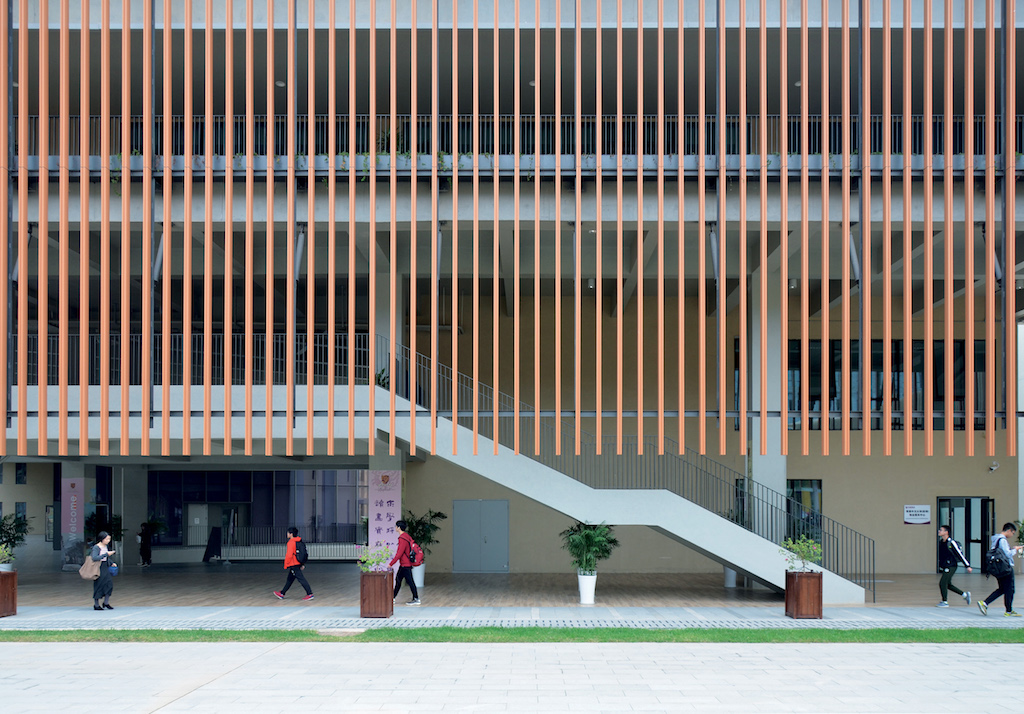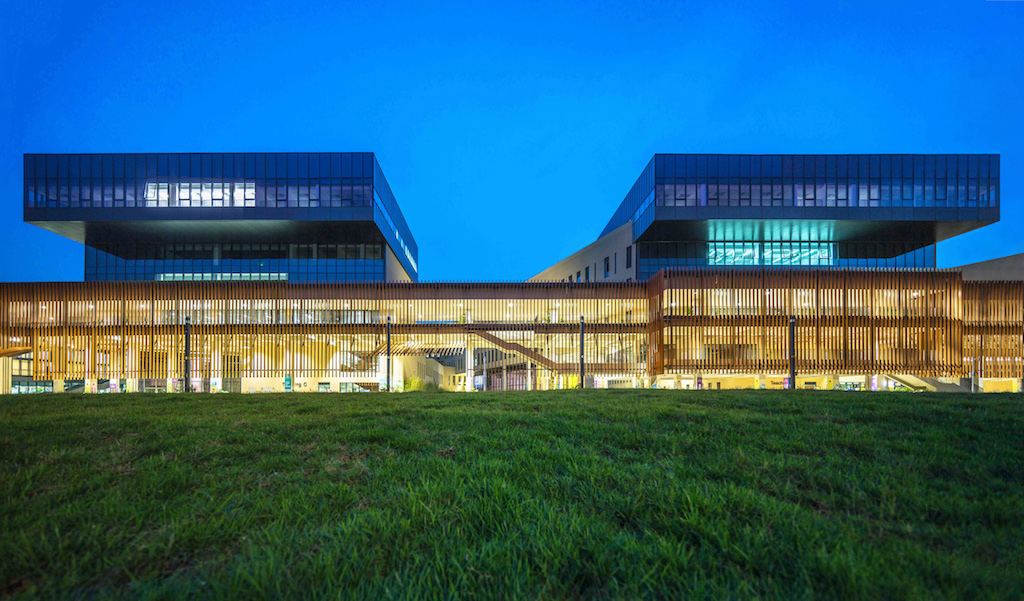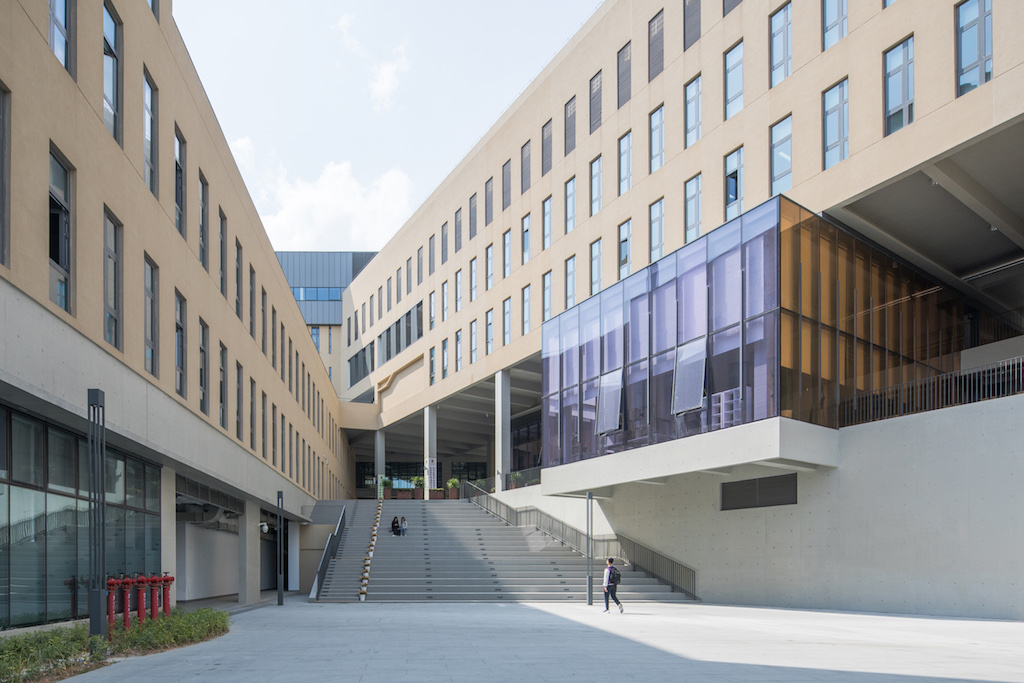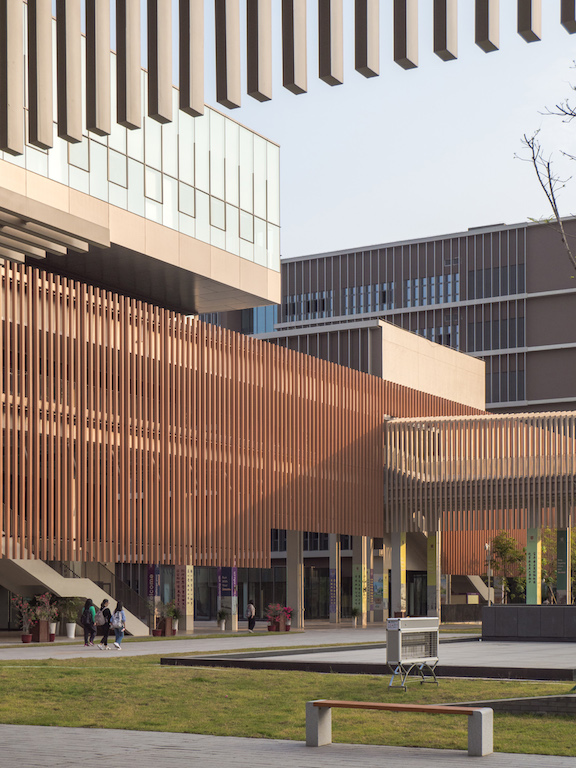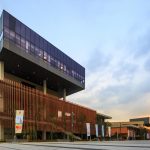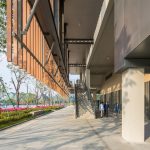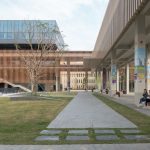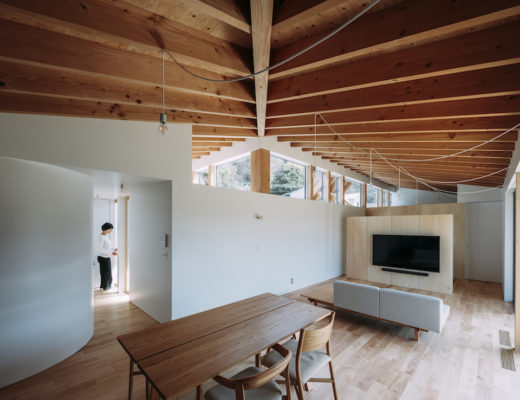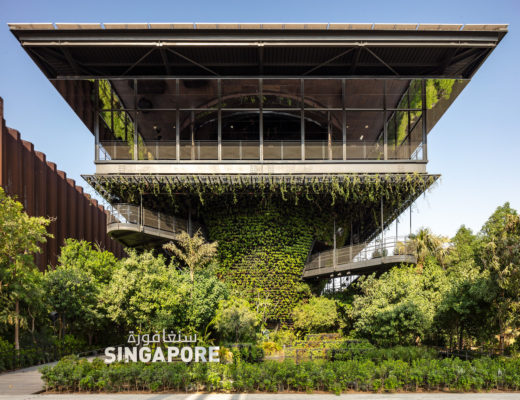The Chinese University of Hong Kong, Shenzhen (CUHK SZ) has been designed by Rocco Design Architects to bring global academic excellence to the city of Shenzhen – China’s rapidly-growing innovation and tech hub. Situated in the natural reserve area of Tong Gu Hill, the campus houses multiple teaching and research facilities, student residences, administrative offices, and recreation facilities that serve 7,000 students.
Rocco Design Architects Associates developed a masterplan and comprehensive design that not only serves the needs of faculty, students, and staff but also creates a sustainable, community-oriented learning environment.
Rocco Yim, founder of the practice explains how the changing education dynamics have informed the design of the institution: “In the traditional Chinese system, the emphasis is very much on focused and intensive academic study/research (physically in isolated blocks) with little emphasis on cross-disciplinary or impromptu exchange. A large number of research fellows and students are coming from an international background and that higher education is very much about providing a platform for information exchange. The SZ Chinese University of Hong Kong campus aims to create spaces that encourage interconnectivity, convenience of circulations, multiple points of contact which promote multi-disciplinary cross-overs and innovative creativities.
“The philosophy behind the planning concept of “building communities and promoting interactions” is founded on the Chinese Confucius quote “Broaden Thy Intellect, Uphold Thy Propriety”, which has been the university ethos of the HKCU since its founding in 1963.”
The project embraces the existing natural landscape as a primary planning premise. To take full advantage of its natural riches while maximising the site’s functionality, the campus is divided into three zones: Natural Terrain, where buildings merge with existing topography; Academic Clusters, which define the urban edge of the campus; and in between the two, Campus Green, a central open space for relaxation and interaction.
By zoning the campus in this way, communities are formed to promote interactions between research, learning, living, and working. The design concept emphasizes the in-between spaces of the buildings within the campus to encourage spontaneous interaction and exchange. Faculty buildings within the Academic Clusters are arranged in a criss-cross formation, which creates a convenient circulation path, multiple points of contact, and flexibility that lends itself to a diverse array of activities.
The CUHK SZ masterplan embodies a unique architectural identity of formal porosity and openness. The project thoughtfully integrates built form with nature and designs multiple spaces that facilitate dialogue within the University community. The resultant space fosters a sense of community and shared inspiration crucial to the development of a vibrant and collaborative campus environment. Other collaborators on the projects include China Northeast Architectural Design and Research Institute, Wang Weijen Architecture and Gravity Partnership.
- OLYMPUS DIGITAL CAMERA
- OLYMPUS DIGITAL CAMERA
Photos: Chao Zhang

